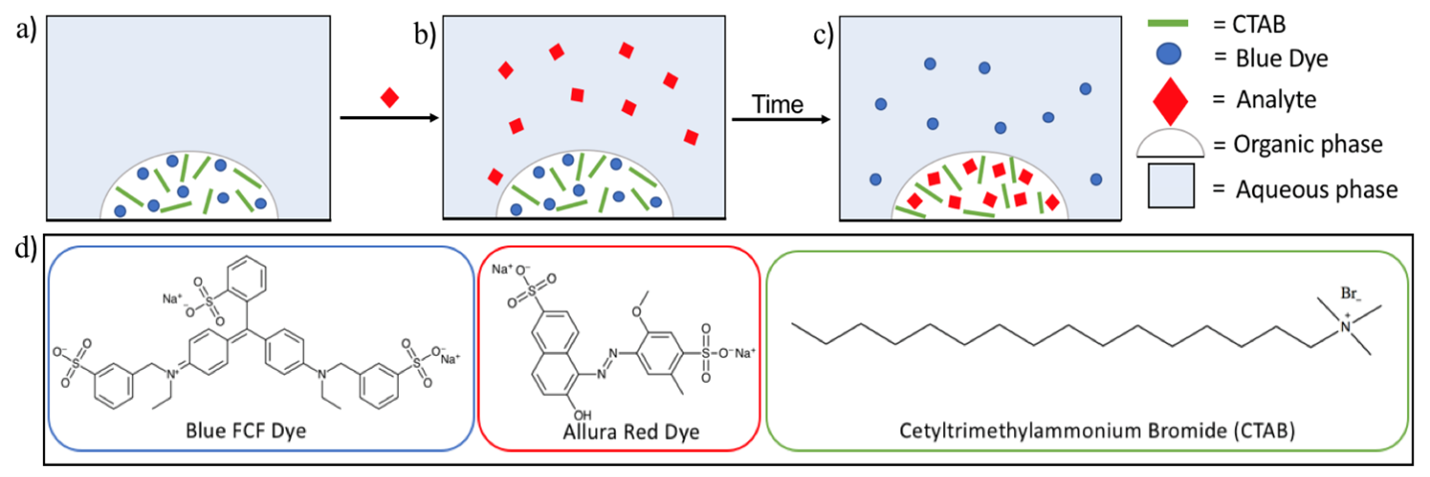Two Phase Indicator Displacement Assay
- Patent Pending
Biosensors are developed with the aim of detecting the presence of a target molecule within a certain solution or medium. Within the past few decades, many biosensors revolve around a design involving supramolecular-based molecular sensors, otherwise known as indicator displacement assays (IDAs). These IDAs generally consist of a supramolecular assembly which includes an optical indicator that is reversibly bound to a synthetic receptor. In the presence of an analyte, the optical indicator will be displaced from the synthetic receptor resulting in an optical signal. These IDAs have proven to have many effective applications in the fields of industrial, agriculture, environmental, and biological sciences. Additionally, Indicator displacement can be used to detect binding in biochemical assays. However, there are still many limitations that need to be surmounted if the full capability of this technique is to be recognized. Some of these limitations include low signal-to-noise ratio and sensitivity of IDAs6.
Here we describe a new type of displacement assay where the indicator is displaced from one phase into another. We use an organic phase with the indicator dissolved in it and add analyte in a second aqueous phase. This new sensing mechanism is based on analyte partitioning in a two-phased system where the receptor is one of the phases. An indicator what is partitioned into the receptor phase is displaced by an analyte introduced into the aqueous phase leading to label free detection of small molecules. Smaller organic phase droplets allow faster detection, higher sensitivity and lower limits of detection.
The analyte displaces the indicator from the organic phase into the aqueous phase, allowing for analyte detection. We call this new type of displacement assay a partitioning indicator displacement assay (PIDA). The concept of displacement is particularly important in pharmacology, where drug binding proteins in the blood can sequester drugs making them less bioavailable. Understanding displacement is crucial to understanding drug interactions, as taking a second drug can displace the first drug from drug binding proteins leading to toxicity that would not be observed at the dosage of a single drug. This mechanism also has implications in biological systems, where small molecules may be displaced from nonpolar condensates such as lipid bilayers, lipid droplets, or other phase separated compartments.
Example of displacement concept. The blue dye is released as it replaces the red dye associated with a receptor.


